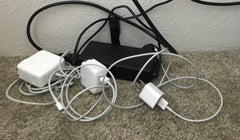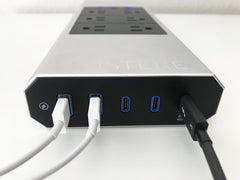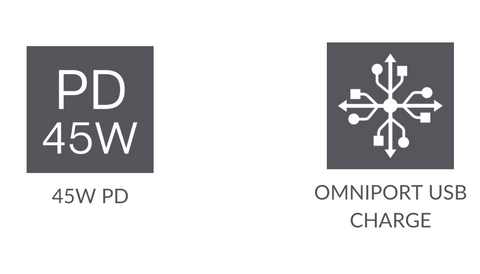Taking Advantage of USB Power Delivery
Does any device plug directly into a wall anymore? It seems that most small electronics utilize USB cables to charge. Your phone, tablet, headphones, portable speakers, all get their juice from a USB connection.
You probably have a drawer in your house with a bunch of those little white power cube adaptors.

Many outlets are starting to include USB plugs already built-in, eliminating the need for power adaptors. Good; one less thing to carry around!
USB was first released in 1996 to standardize the connection of PCs to peripherals for power and data. Since its introduction with version 1.0, there have been seven revisions with upgrades for more data and power. The USB connector itself has seen lots of changes too. Starting with Type A and B, there have been 14 types of connectors. We’ve all run into that problem trying to find the right connection to fit the plug and then having to turn it over because it’s always upside down.
What happened to standardization and simplicity?
It took 25 years, but now we have the connector we’ve been waiting for: USB-C. All those other connections have been phased out (or as the USB Forum likes to say “deprecated”). Along with greater data transfer, USB-C can also handle more power, and this is where Power Delivery (PD) comes in.

However, unlike a wall socket that gives you a standard 120 volts, USB outlets have a variety of charging capabilities that can impact how long it takes for your gear to charge. They’re measured in amperage, volts, and wattage. Generally speaking, more of all three means a faster charge. Chances are you don’t know what you’re getting when you plug in a device, but you do know some plugs take much longer than others.
Help is here and it’s called USB-C Power Delivery (USB-C PD) and is the fastest, most efficient way to charge your devices.
This relatively new fast charge standard can be found on the Austere VII Series Power Center. It’s perfect for phones, cameras, tablets, headphones, portable speakers, and small laptops. Rated at 45W, the Austere USB-C PD is like comparing a straw to a firehose. Normally not found in a power center, most people are forced to buy a separate wall charger unit that can cost $50 and still only give you 20W. That’s less than half of what Austere provides!
Are you concerned about too much wattage overcharging and ruining your device? Don’t worry. Austere uses a Smart Charging chip that completes a “handshake” via the USB-C cable. This handshake identifies what the device is, how much of a charge it needs, and at what wattage. Just plug it in and you’re safely charging in no time. You’ll notice the difference the first time you use it.
USB-C 45W PD and Austere.
More Than Expected.
Always.





Leave a comment